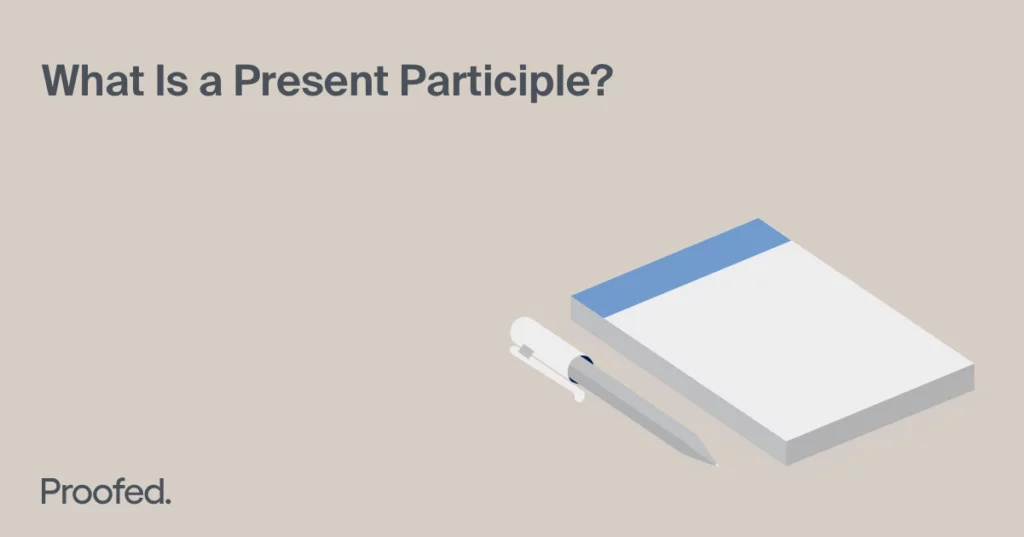Present participles are a key part of English grammar. But what exactly is a present participle? And when do you need one? In this post, we’ll explain the basics.
What Is a Present Participle?
Present participles are a type of verb. Most are formed by adding ‘-ing’ the end of a base verb (e.g. look → looking). These words have two main uses:
- Describing ongoing actions in the progressive tenses.
- Modifying nouns, pronouns, and noun phrases as adjectives.
Let’s look at both of these uses in more detail.
Present Participles in the Progressive Tenses
The progressive (or continuous) tenses refer to ongoing actions. For the present, past, and future progressive tenses, this involves combining some form of the verb ‘be’ (e.g. is, was, are, were) with a present participle:
Present progressive: We are cooking dinner together.
Past progressive: They were eating dinner when he arrived.
Future progressive: He will be graduating next year.
Present participles are also used in the progressive versions of the perfect tenses. In these cases, the present participle will follow ‘has been’ or a variation of this:
Present perfect progressive: The rain has been falling all day.
Past perfect progressive: The pot had been boiling since lunch.
Future perfect progressive: We will have been waiting for an hour by then!
As such, present participles are vital for using tenses correctly.
Find this useful?
Subscribe to our newsletter and get writing tips from our editors straight to your inbox.
Present Participles as Adjectives
If you put a present participle before a noun or noun phrase, it works like an adjective. This means it modifies the word or phrase to tell us something about it:
He wished upon a shooting star.
It was a long, boring lecture.
In the first sentence above, the present participle ‘shooting’ specifies the kind of star. And ‘boring’ in the second sentence tells us about the lecture.
Present particles can also work as modifiers in in participle phrases:
Give this package to the man wearing giant shoes.
Raising his voice to be heard, the man gave his speech.
In the first sentence ‘wearing giant shoes’ tells us about the package’s recipient. And ‘raising his voice to be heard’ gives us extra detail about the man giving the speech. In both cases, though, the present participle is part of a participle phrase.
Forming Present Participles
In most cases, you can form a present participle by simply adding ‘-ing’ to a base verb. But you may need to modify the spelling of the base term slightly when:
- A verb ends with ‘-e’ – In this case, drop the ‘e’ before adding ‘-ing’ (e.g. make → making, write → writing, love → loving, manage → managing).
- A verb in ‘-ie’ – Here, replace the ‘-ie’ with ‘y’ before adding ‘-ing’ (e.g. die → dying, tie → tying, lie → lying, vie → vying).
- The doubling up rule would apply – In these cases, you would double the final consonant before adding ‘-ing’ (e.g. begin → beginning, flap → flapping).
If you’re ever unsure about the spelling of a past participle, though, our expert editors can help. Submit a free 500-word trial document today to find out more.



